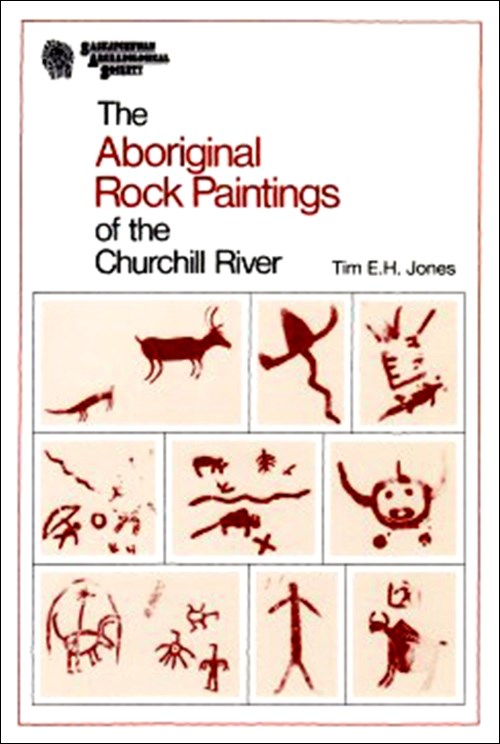By Tim E.H. Jones
Published by Saskatchewan Archaeological Society
$21.00 ISBN 9780969142065
When Tim Jones saw his first rock paintings on Kipahigan Lake in northern Saskatchewan in 1964, he was both puzzled and fascinated. The subject of his master’s thesis, studying these paintings became his lifelong passion.
The Aboriginal Rock Paintings of the Churchill River is the second printing of a book originally published in 1981 based on Jones’s thesis. By the time it went out of print in 2005, it had become a “best seller,” having sold more copies than any other book dealing with Saskatchewan’s archeological past. According to Jeff Baldwin, president of the Saskatchewan Archaeological Society, the book remains “the main published resource on the ancient rock art of Saskatchewan’s north.”
In his preface, Jones points out the importance of this study. “Rock art is the most widely spread, diverse and ancient of all human creative endeavours.” In learning about past artists and their worlds, we learn more about our own world and our current culture. These rock paintings depict a variety of subjects, primarily human-like figures, thunderbirds and snakes. Tobacco pipes, rings, crosses, bird tracks, beavers and human faces with eyes and mouths are also depicted.
Getting to these paintings isn’t easy. All of the sites are along the Churchill River in northern Saskatchewan and Manitoba, reachable only by canoe. Getting supplies and equipment in can be a logistical nightmare. Wilderness experience or a competent aboriginal guide is essential.
It’s difficult to determine the age of these paintings because carbon dating would require extracting too much paint, which would damage the paintings. Fortunately, a new method is being developed that may allow analysis of a sample “the size of a dust speck.”
Over time, some of the paintings have eroded and will continue to be eroded by water seepage and rain. Others have been damaged by vandals chipping away at them or scratching their initials in the formations. One site will be inundated by water from a proposed dam reservoir.
In spite of the wealth of information provided in this study, more research could be undertaken. For instance, what makes the pigments in the rock paintings so bright? Jones puts forth several theories in his book.
The Aboriginal Rock Paintings of the Churchill River is illustrated with 22 colour photos, just a sampling of these paintings and their settings. Forty-one figures reproduce the paintings at their various sites. Many of the images are faded or incomplete, but most of these reproductions replicate the red ochre colour of the originals.
In addition to a list of reference materials and three appendices, this book has two tables and five maps of the Precambrian Shield, otherwise known as the Canadian Shield.
“The rock paintings of the Churchill River are a wonderful gift we have inherited from our predecessors,” Jones writes. His hope, and the aim of the Saskatchewan Archaeological Society, is to promote respect for this art form and preserve these paintings for all to enjoy far into the future.
— This book is available at your local bookstore or from www.skbooks.com



